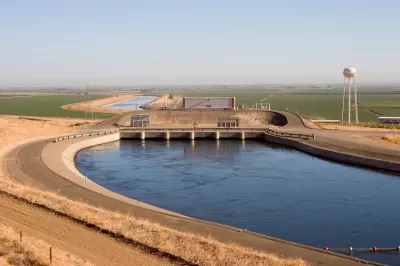The assessment identifies 385 failing public water systems and highlights significant funding gaps and affordability challenges in ensuring safe drinking water for disadvantaged communities.

The California State Water Resources Control Board's 2024 Drinking Water Needs Assessment reveals that 385 public water systems in the state are failing, impacting nearly 913,500 residents. The report, mandated by Senate Bill 200 and supported by the Safe and Affordable Funding for Equity and Resilience Drinking Water (SAFER) program, aims to address these issues through collective efforts from various stakeholders. Since the SAFER program's inception in 2019, over $831 million in grants have been distributed, bringing 251 water systems back into compliance and completing 142 consolidations to benefit approximately 100,000 people.
Despite these efforts, significant challenges remain, with 613 public water systems at risk and high-risk domestic wells and small water systems still present. The assessment highlights a projected five-year funding gap of $5.5 billion to meet the needs of failing and at-risk systems, with a total estimated requirement of $13.9 billion for achieving the human right to water. It also underscores affordability challenges, particularly in disadvantaged communities, where small water systems charge significantly more than larger systems.
The findings from the assessment are utilized by the State Water Board’s SAFER program to prioritize funding allocation, aiming to ensure safe and affordable drinking water for all Californians. The report stresses the need for continued investment and collaboration among government agencies, non-profits, and local communities to overcome these challenges and secure safe drinking water for vulnerable populations.

Study: Maui’s Plan to Convert Vacation Rentals to Long-Term Housing Could Cause Nearly $1 Billion Economic Loss
The plan would reduce visitor accommodation by 25,% resulting in 1,900 jobs lost.

North Texas Transit Leaders Tout Benefits of TOD for Growing Region
At a summit focused on transit-oriented development, policymakers discussed how North Texas’ expanded light rail system can serve as a tool for economic growth.

Why Should We Subsidize Public Transportation?
Many public transit agencies face financial stress due to rising costs, declining fare revenue, and declining subsidies. Transit advocates must provide a strong business case for increasing public transit funding.

How to Make US Trains Faster
Changes to boarding platforms and a switch to electric trains could improve U.S. passenger rail service without the added cost of high-speed rail.

Columbia’s Revitalized ‘Loop’ Is a Hub for Local Entrepreneurs
A focus on small businesses is helping a commercial corridor in Columbia, Missouri thrive.

Invasive Insect Threatens Minnesota’s Ash Forests
The Emerald Ash Borer is a rapidly spreading invasive pest threatening Minnesota’s ash trees, and homeowners are encouraged to plant diverse replacement species, avoid moving ash firewood, and monitor for signs of infestation.
Urban Design for Planners 1: Software Tools
This six-course series explores essential urban design concepts using open source software and equips planners with the tools they need to participate fully in the urban design process.
Planning for Universal Design
Learn the tools for implementing Universal Design in planning regulations.
City of Santa Clarita
Ascent Environmental
Institute for Housing and Urban Development Studies (IHS)
City of Grandview
Harvard GSD Executive Education
Toledo-Lucas County Plan Commissions
Salt Lake City
NYU Wagner Graduate School of Public Service





























